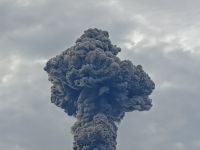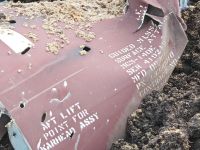Britain can mobilise a range of specialist troops for ground operations in Afghanistan, including elite soldiers trained in mountain, desert and Arctic warfare behind enemy lines.
Britain's Defence Secretary Geoff Hoon said on Monday British ground troops were ready to be deployed in Afghanistan at "very short notice" but stressed no decision had yet been taken.
Press reports suggest, however, that ground troops including Special Air Service (SAS) soldiers, the cream of Britain's armed forces, could already be in Afghanistan helping the opposition Northern Alliance.
The Times, quoting defence sources, said on Monday about 400 specialist troops were in the region or poised to go.
They are said to include two SAS squadrons totalling 100 to 120 men, specialist support units totally more than 200 men and a squadron of the Royal Marines' Special Boat Service.
The Sunday Telegraph said the specialist troops could also include the 24-strong Brigade Patrol Troop, which are specialised in the extremes of winter warfare, as are Royal Marine commandos.
Such forces, lightly armed and operating in units of two to six men, could parachute in, hide out for days or even weeks, gather intelligence and call up air strikes.
The chief of the defence staff, Admiral Sir Michael Boyce, has said that 40 and 45 Royal Marine commandos, two thirds of 3 Commando Brigade, would be "given very close consideration" if British ground troops were sent into Afghanistan.
The commandos are currently participating in a 23,000-strong British military exercise in Oman where the Royal Navy has assembled the largest fleet since the 1982 Falklands War.
Two British nuclear powered submarines in the area have already fired cruise missiles against Afghanistan's ruling Taliban.
Also reportedly among the British defence forces in Oman is an SAS squadron of about 50 men.
In total, Britain's SAS force is thought to number around 200 soldiers, divided into four squadrons. Generals have agreed to a US request for the unprecedented deployment of three of these, according to the Sunday Telegraph.
The SAS has a history of perilous missions since World War II.
In front of television cameras in 1980, its troops stormed the Iranian embassy in London where hostage-takers had killed one of their captives. The SAS freed the remaining captives and killed five of the six hostage-takers.
The crack squad was the brainchild of David Stirling, a British army officer in World War II, who envisaged a highly trained special force which could wreak havoc on supply routes and conduct lethal operations behind enemy lines.
Stirling convinced his superiors, who ordered the first SAS mission to weaken German general Erwin Rommel's North African logistics network and hinder aircraft operations.
There were to be many more SAS operations in the war against Hitler and later, the SAS saw action in several counter-insurgency operations in Oman, Aden, Malaya and Borneo.
They were also deployed in Northern Ireland against the Irish Republican Army and saw intensive action in the Falklands conflict of 1982.
During the Gulf War, SAS teams penetrated deep within Iraq to search for mobile Scud missile launchers -- London, (AFP)
© 2001 Al Bawaba (www.albawaba.com)







